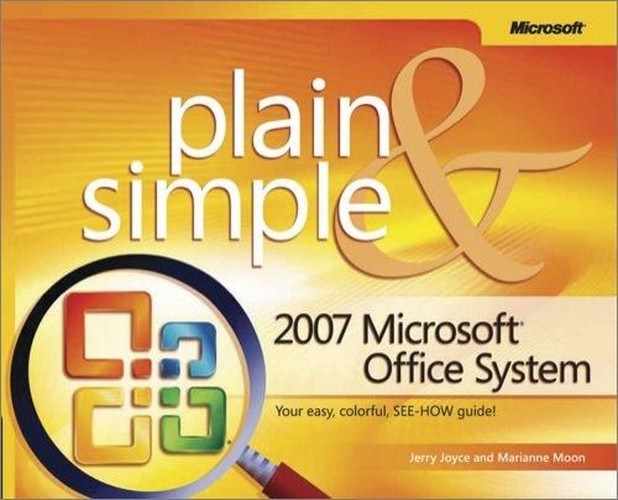Most of us have witnessed the embarrassment of someone who’s struggling to get a slide presentation to run from a projector or on a second monitor. Why is there no video signal from the computer to the projector? Why is only part of the screen visible? Or—oops!—once the show finally gets going, a screen saver suddenly pops up, or the computer goes to sleep. It’s awful! The flustered presenter has to log back on and resume the presentation, only to be sabotaged yet again by the screen saver or the power settings. Fortunately, PowerPoint and Windows Vista have teamed up to help you or your presenter avoid such disasters.
If you’re using a portable computer with Windows Vista to run your slide show, you have access to the Windows Mobility Center, where you can make settings that prevent most of the problems we’ve mentioned. To run the Windows Mobility Center, open the Vista Start menu, type mob in the Search box, and click Windows Mobility Center. Now you can set up the way your computer will behave when you’re giving a presentation. When you click the Presentation Settings button, you can prevent the screen saver from appearing, set the sound volume, and include a background picture if your presentation doesn’t fill the entire screen. When you turn on the presentation settings, you can also prevent the computer from going to sleep and can stop system messages from appearing.
The Windows Mobility Center also helps you set up the connection to a second monitor or to a projector. Provided the monitor or projector is connected and turned on, when you click the Connect Display button, Vista searches your computer for a second display connection. Once you’re connected, you can set different arrangements by clicking the Change Display Settings button.
In most versions of Windows Vista you can also use a tool to help you connect to a network projector. By using the Connect To A Network Projector Wizard, you can search for any projectors on the network or, if you’ve been given the projector’s address, connect by entering the address and, if necessary, the password.
Whether you’re using a portable computer or a desktop model, PowerPoint can control your display by changing the resolution (the size) of the presentation if it’s too big or too small on the screen (or if the display can’t use a certain resolution). PowerPoint also lets you specify which monitor to use to present the slide show. If your computer has multiple-monitor capability, you can also use Presenter view, which provides controls to run the show and access to all your notes.

